Final written warning appeal letter template
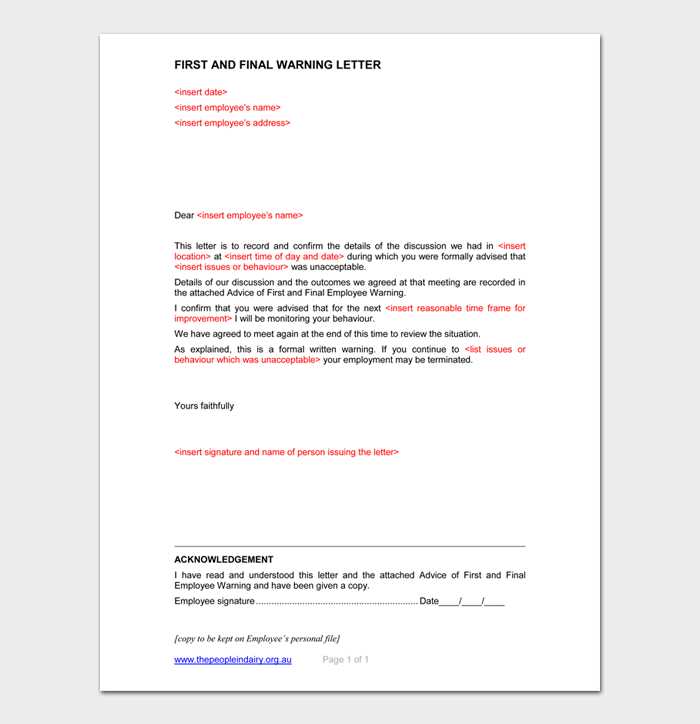
Template Structure
Follow this clear and direct approach to structure your appeal letter. Ensure it is polite, concise, and to the point.
1. Heading
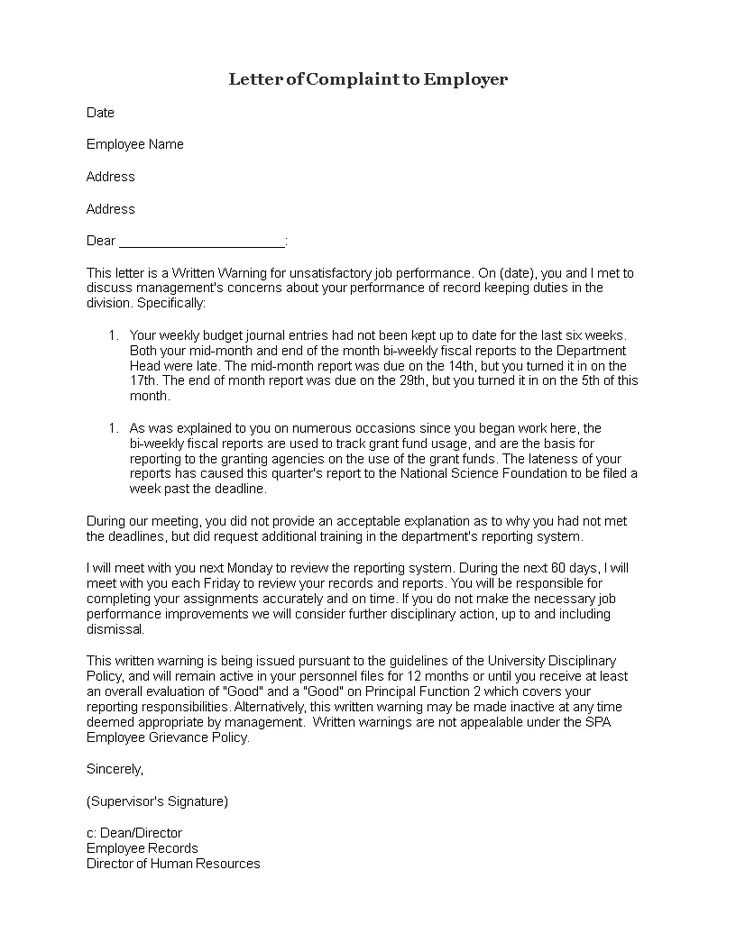
Include your personal information, the date, and the recipient’s details at the top. Use this format:
- Your Name
- Your Address
- City, Zip Code
- Email Address
- Phone Number
- Date
- Manager’s Name
- Company’s Name
- Company’s Address
2. Subject Line
Make it clear and straightforward, e.g., “Appeal Against Final Written Warning”.
3. Opening Paragraph
Start by respectfully addressing the recipient. State the purpose of your letter immediately, acknowledging the warning but expressing your intent to appeal it.
Example:
Dear [Manager’s Name],
I am writing to formally appeal the final written warning issued to me on [Date]. I respect the company’s policies and understand the concerns raised. However, I would like to provide additional context and present my case for reconsideration.
4. Explain Your Case
Clearly and briefly explain why you believe the warning was unfair or unwarranted. Provide any relevant details, such as misunderstandings, extenuating circumstances, or issues you have resolved since the warning was given.
Example:
As mentioned, the incident that led to the warning was a result of [briefly explain the issue]. Since then, I have taken [describe actions you’ve taken to improve or prevent further issues]. I am committed to meeting expectations and ensuring this does not happen again.
5. Request for Review
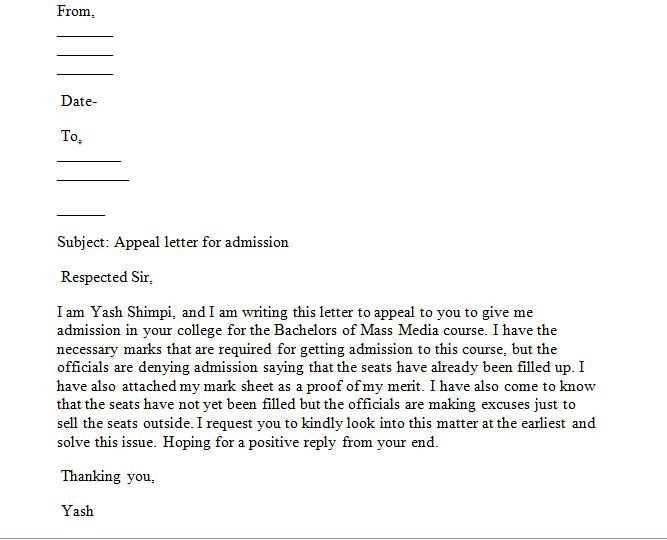
Politely request that the warning be reviewed. Express your willingness to work together to find a positive resolution.
Example:
I respectfully ask that you reconsider this final written warning in light of the circumstances and actions I have taken since the incident. I am confident that I can continue to contribute positively to the team and uphold the standards expected by [Company Name].
6. Closing Paragraph
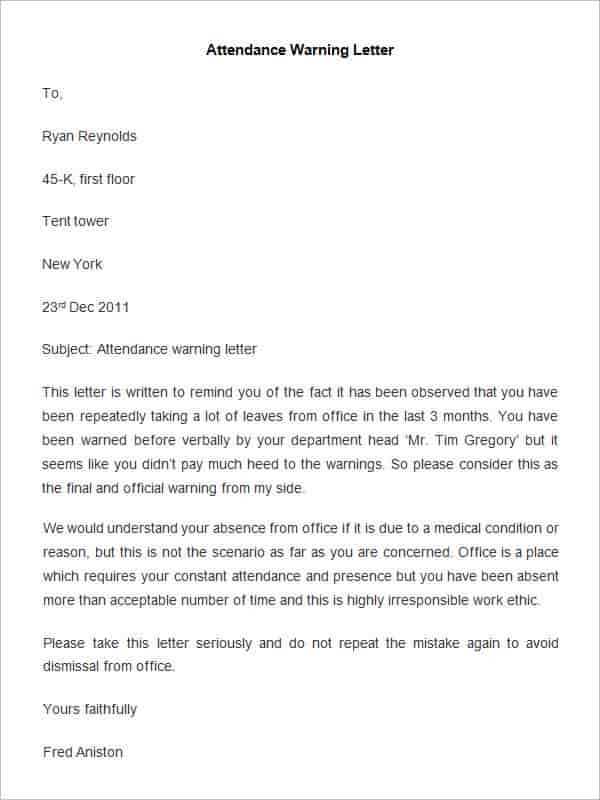
End the letter by thanking the recipient for their time and consideration. Reaffirm your commitment to improving and complying with company standards.
Example:
Thank you for considering my appeal. I am eager to resolve this matter and continue working together toward [Company Name]’s success. I am available to discuss this further at your convenience.
7. Signature
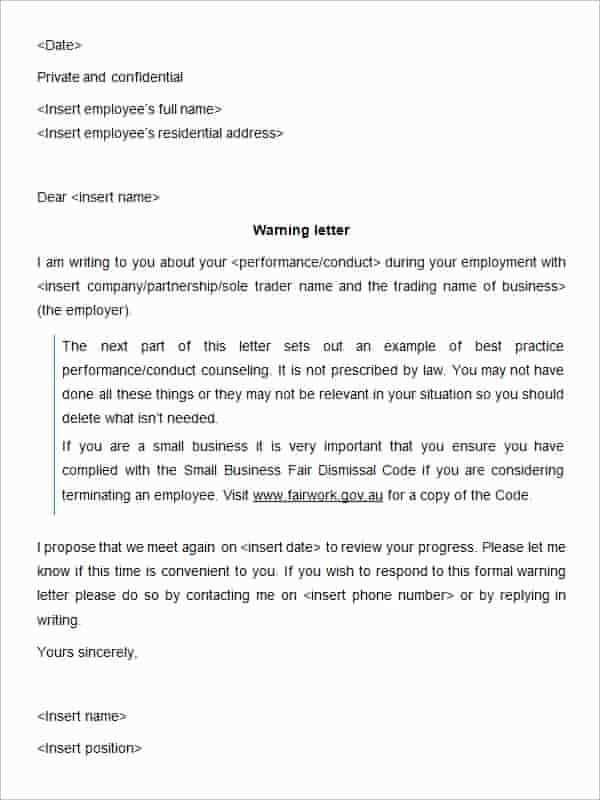
Finish the letter with a professional closing, such as:
Yours sincerely,
[Your Name]
Final Written Warning Appeal Letter Template
Understanding the Purpose of a Final Warning Appeal Letter
Key Elements to Include in Your Appeal
How to Address the Reasons for the Warning in Your Appeal
Strategies for Presenting Your Case Clearly and Professionally
How to Request a Resolution or Alternative Outcome
What to Do After Sending Your Appeal Letter
Begin by clearly stating the purpose of your letter: to appeal the final written warning issued to you. Acknowledge the warning and express your intent to provide a formal explanation or defense regarding the circumstances leading to it.
Key Elements to Include in Your Appeal: First, include the details of the warning, including the date it was issued and the specific reasons provided. Follow this with a clear statement of your disagreement with the warning, providing any evidence or context that challenges the reasoning behind it. Make sure to express your willingness to cooperate and resolve any issues, if necessary.
How to Address the Reasons for the Warning: Focus on the facts surrounding the issue, offering a direct response to the specific points raised in the warning. If there were misunderstandings or extenuating circumstances that influenced your behavior or performance, outline them calmly and logically. If applicable, suggest how such issues can be avoided in the future.
Strategies for Presenting Your Case: Keep your tone respectful and professional. Present your case with clarity, using bullet points or paragraphs for each issue addressed. Avoid emotional language and stick to the facts. Ensure your writing is concise and well-organized, making it easy for the reader to follow your points.
How to Request a Resolution: Politely request a resolution or alternative outcome. This could involve asking for a review of the decision, proposing a reconsideration of the warning, or suggesting a meeting to discuss the matter further. Be clear about what outcome you are hoping for and why it would be a fair resolution based on the facts you’ve presented.
What to Do After Sending Your Appeal Letter: After submitting your appeal, follow up if you do not receive a response within a reasonable timeframe. Be prepared to participate in further discussions or meetings if needed. Keep a copy of your appeal letter for your records and document any follow-up actions taken.